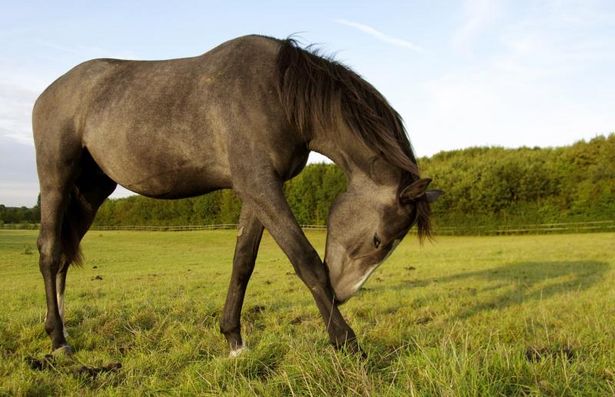There are many different medication to help in the treatment of horse joint pain inflammation, for example; Adequan, Aspirin, Bute, Dexamthasone, Equioxx, Ketoprofen, Legend, Surpass and Traumeel.
Phenylbutazone(Bute), flunixin meglamine (Banamine), and ketoprofen (Ketofen) are the most common NSAID’s used in horses while aspirin and ibuprofen are the most commonly used NSAID’s in humans. These are very effective in eliminating discomfort and are usually the first line of therapy in minor musculoskeletal pain. These products work by affecting the inflammatory cascade and downregulating mediators produced in the inflammatory cycle The most common and severe side-effect of these agents include gastrointestinal ulceration and reductions in kidney perfusion. U formation is becoming more recognized as a common occurrence in all breeds of horses due to stress and NSAIDs definitely can contribute to this process.
Traumatic joint disease in horses includes synovitis (inflammation of the fluid-producing membrane), capsulitis (inflammation of the fibrous joint capsule), articular cartilage and bone fragmentation, ligamentous tearing, and eventually osteoarthritis. In many cases, the disease process primarily involves soft tissue overuse and microtrauma to the bone surfaces, and therefore can be challenging to diagnose without diagnostic anesthesia. In addition to localizing pain to a certain joint with aide of diagnostic anesthesia, radiographs, ultrasound, computed tomography, magnetic resonance imaging techniques and diagnostic arthroscopy have all be used to confirm causes of joint lameness.
Aggressive treatment in joint disease is indicated to decrease immediately soft tissue swelling and inflammation as well as to postpone the onset of permanent osteoarthritic changes. There is inherent difficulty in identifying joint pathology by any other means than subjective examination and lameness reports from trainers. The goal of any systemic or intraarticular therapy is to stop problems before they occur rather than wait for abnormal radiographs and then start aggressive therapy.
In conclusion, be sure it’s arthritis. If your horse is sore, you need to be certain why. Delaying proper care trying a joint nutraceutical is unfair to your horse and may make things worse and more difficult. Glucosamine is a must-have ingredient. This may be a more economical route, but it’s not as easy as choosing a commercial product that includes all three. As consumers, we believe the National Animal Supplement Council (NASC) product seal is a plus.. If they don’t work well, move to the mid-level choices or find a product with similar ingredient levels. Save the double-barrel shotgun recommendations for horses with extreme demands. Finding a joint supplement that suits your budget, that your horse will eat, and that has a noticeable effect can be hard to do. If you have a product that meets those criteria, and it works, keep using it.





